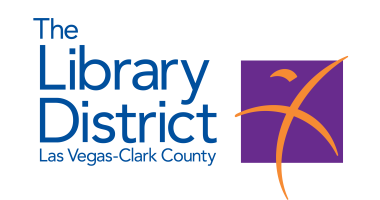Main Body
64 Healing and Recovery
The immediate aftermath of the Oakhaven murders saw a
surge in demand for mental health services, far exceeding the
capacity of the existing resources. The local hospital, already
strained, was overwhelmed with individuals experiencing
acute anxiety, panic attacks, insomnia, and post-traumatic
stress disorder (PTSD). Waiting lists for therapy stretched
for months, leaving many victims feeling abandoned and
alone in their suffering. The lack of readily available mental
health support only exacerbated the community’s trauma,
creating a vicious cycle of despair and isolation.
Recognizing the inadequacy of existing resources, a
coalition of local organizations, including the Oakhaven
Community Center, the local church, and the school district,
collaborated to establish temporary crisis intervention
centers. These centers provided immediate support, offering
counseling sessions, medication management, and referrals
to long-term treatment. Trained volunteers, many of whom
were themselves affected by the murders, offered peer
support, providing a crucial sense of community and
understanding. The centers became havens for those in
desperate need, offering a safe space to process their
emotions, share their experiences, and connect with others
who understood their pain.
The healing process was not a linear one; it was
characterized by fits and starts, relapses and breakthroughs.
Some individuals found solace in group therapy, finding
strength and comfort in the shared experience of others. The
collective mourning process, though emotionally taxing,
helped normalize feelings of grief, anger, and despair. Others
found healing in individual therapy, working through their trauma at their own pace, addressing personal wounds and
coping mechanisms. Art therapy, particularly for children,
proved to be an invaluable tool, allowing them to express
their emotions in a non-verbal way, creating a safe space to
process their experiences.
For some, medication was essential in managing symptoms
of PTSD and anxiety. Antidepressants and anti-anxiety
medications helped alleviate the acute symptoms, providing
a degree of stability that allowed individuals to begin the
process of healing. However, medication alone was not
enough; it needed to be coupled with therapy to address the
underlying trauma and develop effective coping
mechanisms. The combination of medication and therapy
proved to be most effective in reducing symptoms and
improving overall mental health.
The community itself played a crucial role in the healing
process. Spontaneous acts of kindness, empathy, and support
helped to foster a sense of togetherness and hope. Neighbors
checked in on each other, offering practical assistance with
childcare, errands, and household chores. Community
fundraising events raised money to support families affected
by the murders, providing financial relief during a time of
immense emotional strain. The establishment of community
gardens provided a tangible symbol of healing and
regeneration. The shared act of tending the land, nurturing
new life from the soil, provided a sense of hope and purpose.
Beyond the immediate crisis response, the community
embarked on a long-term plan for mental health support and
trauma recovery. This involved investing in additional
mental health professionals, expanding access to counseling
services, and integrating mental health education into the
school curriculum. A community-wide initiative aimed at
reducing the stigma surrounding mental illness was launched, encouraging open conversations about mental
health and promoting help-seeking behavior. The Oakhaven
Public Library hosted workshops and lectures on coping
with trauma, grief, and anxiety, providing residents with
practical tools and resources.
The school system played a vital role in supporting children
and families. Counselors were made available to students
who needed it, providing individual and group counseling
sessions. Educational programs were developed to help
children understand their feelings and develop healthy
coping mechanisms. Teachers received specialized training
on trauma-informed practices, learning how to identify signs
of trauma and how to create a safe and supportive learning
environment. Family support groups were established,
providing parents and caregivers with resources and a
supportive community.
Law enforcement also played a critical role in the healing
process. After the intense pressure and trauma of the
investigation, the Oakhaven Police Department
acknowledged the psychological toll on their officers. A
specialized support program was established providing
access to counseling services, peer support groups, and stress
management techniques. The department actively engaged in
community outreach efforts, fostering positive relationships
with residents and rebuilding trust. Open communication and
transparency were key to regaining the confidence of the
community.
Despite the extensive efforts, healing was not uniform; some
residents struggled more than others. The prolonged effects
of trauma were evident in various ways, such as increased
rates of substance abuse, domestic violence, and chronic
health problems. Many found that their grief persisted long
after the initial shock wore off, manifesting in unexpected ways, such as anniversaries or holidays, or triggers
associated with the events. Longitudinal studies were
conducted to monitor the community’s long-term recovery.
Researchers tracked various indicators, including mental
health metrics, economic stability, crime rates, and social
cohesion. The findings showed that the healing process took
years, not weeks or months. Community resilience, while
evident, was a protracted endeavor requiring ongoing
support and resources.
The Oakhaven murders left an indelible scar on the
community’s collective psyche. Yet, from the ashes of
tragedy, a remarkable story of resilience and healing
emerged. The community’s collective determination to
rebuild, its commitment to providing support to victims and
their families, became a beacon of hope, a testament to the
human spirit’s enduring capacity to overcome immense
adversity. The experience became a powerful reminder that
healing from collective trauma is a complex, ongoing
process, demanding long-term commitment and resources
from the community, law enforcement, mental health
professionals, and government organizations. The legacy of
Oakhaven, therefore, extended beyond the tragic events
themselves, serving as a case study for future communities
facing similar challenges, offering a blueprint for recovery
and demonstrating the enduring strength of the human spirit
in the face of unimaginable loss. The path to healing was
long and arduous, marked by moments of despair and
uncertainty, but the collective commitment to rebuilding and
recovery ultimately prevailed, proving that even in the
darkest of times, hope can endure and healing is possible.
